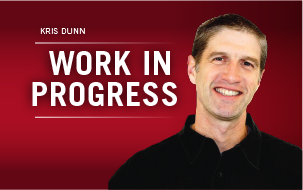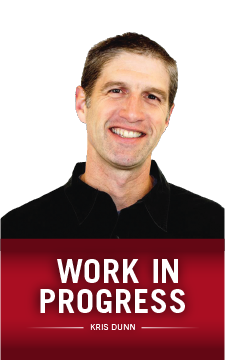Summary
- The hiring process is an employer’s first chance to make a good impression. It needs to be seamless to attract the best candidates.
- 86% of HR professionals say that recruitment is becoming more like marketing. And in today’s competitive labor market, it’s easy to see why.
- Applicant experience is crucial for keeping top candidates engaged and maintaining a good employer brand. Streamlining recruitment using technology can transform a good hiring experience into a great one.
In a tight labor market, hiring can make or break your chances of capturing quality new hires. It is often the first touchpoint between a company and potential new employees, and an excellent first impression is everything. A clunky approach to hiring will not only slow things down but also deter quality people from applying.
If you’re looking to attract qualified candidates fast while keeping things efficient, it might be time to rethink the hiring process. In this post, we’ll dive into 10 practical tips to improve your recruitment strategy.
1. Focus on setting clear hiring goals.
All of your recruitment initiatives will stem from your hiring goals. They act as your jumping point; if you’re unclear about these, you risk wasting resources and missing out on filling the company’s staffing needs.
When determining what your hiring efforts should aim for, here are questions you need to ask yourself:
- What are the staffing gaps, operational needs, or business needs you must address? Is it filling roles for a new business location, or is it to replace team members who left?
- What are the specific roles needed to fill the gap?
- What are the characteristics of an ideal candidate?
- What are the specific skills or experience candidates must have?
- What soft skills must they possess? Consider your company culture and define what characteristics would make a hire fit to work with the team.
- How fast should you be able to hire?
Talent acquisition requires significant effort, and you should focus your energy on defining hiring goals that drive business results.
2. Create clear job ads.
“What’s in it for me?” – This is the question your job descriptions should answer for potential candidates.
Try to frame your job listings through the applicant’s POV. First, the listing should cover the basics of the job role, which includes what’s expected in terms of tasks and responsibilities. Second, it should paint a picture of how an ideal candidate would fit in the organization, which can allude to the type of working environment you offer.
Let’s discuss wording. Avoid overly technical jargon and internal corporate speak. Potential candidates won’t care much for those. Instead, keep your wording concise and direct and language neutral.
Here are crucial elements that your job descriptions should cover:
- Job title
- Duties and responsibilities
- Required skills, competencies, and qualifications
- Preferred qualifications or nice-to-haves
- Working location
- Benefits
- Salary range
In addition to the basics, you can include more information about the team they will be part of and brief details about the organization.
Writing job descriptions can be time-consuming. We’ve curated a list of job description templates to give you a headstart. Feel free to download them and customize them according to your specific requirements.
3. Be smart with advertising open positions.
Generally, hiring teams utilize job boards and social media sites like LinkedIn to reach as many candidates as possible. While those are great, there are other opportunities to get the word out.
Consider placing job postings in your place of business. Of course, no one has time to read a job description if they are just passing by your cafe or retail store, so why not simply print out a QR code that leads to the details of your job opening?
Workforce.com’s Applicant Tracking System (ATS) lets you print customized QR codes that link to online job applications. Any interested applicant can simply scan the code and apply straight from their mobile devices, and you will be alerted when submissions come in.
But before you go broadcasting an open position to the public, think about the roles you’re trying to fill. Consider hiring from within to reduce the time and resources it takes to onboard a new employee.
What about referrals? Nothing beats word-of-mouth advertising. Your current employees can be your best ambassadors since they have first-hand experience. They can share insight into company culture far better than any job posting you publish.
4. Get serious about employer branding.
Better branding attracts better candidates. In fact, 86% of HR professionals agree that recruitment is becoming more like marketing, according to a study. And with today’s challenging labor market, it’s easy to see why. Like marketing, you need to understand your target audience—your ideal candidates—and find ways to stand out.
To get leadership on board, here’s a compelling stat: a strong employer brand can reduce the cost-per-hire by up to 50%. Plus, half of job seekers won’t consider working for a company with a bad reputation. In short, employer branding isn’t just nice to have; it’s crucial for staying competitive.
Start by improving the hiring experience. Use data to track candidate experience and satisfaction, communication frequency, and key metrics like time-to-hire. Streamlining these processes with applicant tracking technology enhances efficiency and leaves a positive impression on candidates. Remember, every interaction counts, and a smooth hiring process can make all the difference.
Keep in mind that negative stories spread fast these days, whether it’s a poor recruitment experience or a toxic work environment. With social media and online forums, you don’t want to be trending for the wrong reasons.
So, how do you build a strong employer brand? It starts with your core: a healthy company culture. Today’s candidates can spot inauthenticity a mile away, so your efforts need to be genuine. Once you establish strong values, they’ll naturally shape how you hire and manage talent on a daily basis.
5. Use technology to streamline the process.
There’s a lot of work that goes into hiring. Without the right tools to help you stay organized, you run the risk of mishandling important information, wasting time, and hiring the wrong people. Consider using an HR platform or an applicant tracking system (ATS) to streamline your hiring process.
Workforce.com is a prime example of one such system. Its HR suite significantly reduces time spent sifting through resumes and onboarding new hires. Here’s how it improves your recruitment efforts:
- It helps you get more applicants. Every time you create a new job posting, you can generate a QR code associated with the listing and post it in your business to make access to applications easier. Workforce.com also collates all previous applications and the positions a person is interested in. When you post new job listings that match a previous applicant’s interests, the system notifies this talent pool, automatically getting you more traction from the moment you post the new job.
- It helps you with the selection process and pre-qualifies applicants quickly by setting up role-specific questions about availability, experience, and requirements. This enables you to screen candidates before scheduling interviews, weeding out those who don’t meet your criteria upfront.
- It reduces data reentry by using one user profile across hiring, HR, and payroll. Since the whole employee lifecycle is synced in Workfore.com, applicant information from the hiring stage is automatically brought into a new hire’s payroll and HR profile. This means that once someone fills out an application, they have essentially already filled out about 80% of their employee profile. If you decide to hire them, all of this information is used—there’s no need to create multiple profiles with repeat information.
- It helps you onboard new hires right away. Within minutes, your new hires can fill out onboarding forms, provide their personal information, and submit their W-4s and I-9s. No lengthy paperwork and manual entry is needed.
- It helps you track recruitment metrics. It gives you an overview of hiring progress, spotting delays, and identifying roadblocks. Plus, it covers all your locations, so you can see who needs extra recruitment support.
An ATS is great for hiring, but one that’s housed in the same HR system as onboarding and payroll is a game-changer and can save a significant amount of time. It streamlines the entire journey—from recruitment to onboarding to that first paycheck.
6. Eliminate unconscious bias.We’re human, and we’re naturally wired to have biases. However, if these biases are left unchecked during the hiring process, they can lead to poor decisions. Take steps to eliminate anything clouding your judgment from focusing on what a candidate truly offers.
Reduce unconscious bias by focusing solely on an applicant’s technical skill sets instead of their demographic details such as gender, race, and age. Furthermore, you can view job applications with redacted names or personal information so their skills and experiences are front and center.
7. Improve how you interview.
The interview stage is crucial for applicants and the company to get to know each other better. It’s an opportunity to assess technical skills and values, making it the ideal time to evaluate cultural fit alongside qualifications. And you do that by asking the right questions.
Whether you utilize structured questions or free-flowing discussions is your prerogative. But regardless of what route you choose, make sure that it helps you evaluate applicants objectively.
Structured interview questions help you gauge how applicants fare against each other. This interview style makes it easy to compare and judge applicants based on their answers to a series of important and relevant questions.
On the other hand, a less structured approach can better reveal a person’s values, personality, and soft skills, helping you assess their cultural fit. Unstructured interviews can also make applicants feel more comfortable during interviews.
Ultimately, the goal is to find the best fit for the role. Whether you prefer a structured or flexible interview style or a mix of both, ensure it leads to a fair and informed hiring decision.
8. Understand who you’re hiring.
Not all hiring processes are the same, especially when it comes to salaried versus hourly roles. Your recruitment approach should adapt to each, from sourcing, screening, onboarding, and compliance.
For instance, recruiting a line cook for one of your restaurants is a much different process than hiring a finance manager for an insurance agency. Hourly roles often require a faster and leaner process to meet urgent staffing needs. Having a system that lets candidates apply easily and keeps unnecessary data and timelines to a minimum is ideal.
In contrast, hiring for salaried positions usually involves multiple interview stages and a more thorough vetting process. For these hires, it’s crucial to have a comprehensive applicant tracking system that monitors each stage efficiently and keeps candidates engaged throughout the process.
Ultimately, hiring for hourly positions prioritizes speed, volume, and efficiency, while salaried roles focus on depth, fit, and long-term alignment. Understanding these nuances allows you to tailor your hiring processes and shapes how you manage time tracking, shift scheduling, and payroll for each type of hire.
9. Always communicate with applicants.
You don’t want to be labeled as an employer who ghosts applicants, do you?
While you will undoubtedly need to prioritize some applicants over others, you should never leave unqualified candidates hanging. Keep candidates informed every step of the way —from confirming their application to updating them on the next steps, whether they qualify for an offer or not.
Additionally, offer a channel for applicants to reach out when they want to follow up or ask a question. This will help them feel at ease and keep strong candidates engaged in the process.
10. Regularly evaluate your hiring process.
As new technologies and trends emerge, your hiring process can quickly become outdated. Conduct regular assessments of your hiring process and practices. Identify what works, spot areas for improvement, and tackle any roadblocks. A flexible, evolving hiring process keeps you aligned with market shifts, maintains efficiency, and positions you to attract top talent.
Fill roles faster and simplify your recruitment process with applicant tracking software

Hiring hourly employees? Workforce.com’s online hiring system can help you find the best talent to fill your staffing needs.
Workforce.com is end-to-end HR, scheduling, and payroll software for hourly teams.
The cloud-based platform features an applicant tracking system that streamlines hiring—from posting job advertisements to pre-qualifying candidates, interviewing them, and eventually onboarding them—all without lengthy paperwork or double entry.
Discover how Workforce.com can help you with hiring and more. Book a demo today.








 “I think we’re at the beginning of sorting out what all this means, but I think it’s definitely something people are thinking about,” said Jeffrey Bosley, San Francisco-based partner in the labor and employment practice of law firm Davis Wright Tremaine. “It’s a new technology and it’s evolving. Whenever you have a new technology, you do have
“I think we’re at the beginning of sorting out what all this means, but I think it’s definitely something people are thinking about,” said Jeffrey Bosley, San Francisco-based partner in the labor and employment practice of law firm Davis Wright Tremaine. “It’s a new technology and it’s evolving. Whenever you have a new technology, you do have 




 When hiring is brisk, it’s easy to rush the process and end up with mismatched employees. So it’s important to know what motivates them — not just how they behave, but why they do what they do. With today’s labor market, finding the best match for performance and retention pays for itself in retention alone.
When hiring is brisk, it’s easy to rush the process and end up with mismatched employees. So it’s important to know what motivates them — not just how they behave, but why they do what they do. With today’s labor market, finding the best match for performance and retention pays for itself in retention alone.
 This column is not meant to help those looking for their first HR hire, which is generally an individual added by small to medium-sized business when transactional items like payroll and compliance overwhelm an office manager or similar administrative employee with another job to do.
This column is not meant to help those looking for their first HR hire, which is generally an individual added by small to medium-sized business when transactional items like payroll and compliance overwhelm an office manager or similar administrative employee with another job to do.
 That encourages job boards to work harder to retain traffic. Rather than charge for how long a post remains online, pay-per-click plays a larger role in their business models. That, too, incites job boards to create simple, effective user experiences.
That encourages job boards to work harder to retain traffic. Rather than charge for how long a post remains online, pay-per-click plays a larger role in their business models. That, too, incites job boards to create simple, effective user experiences.